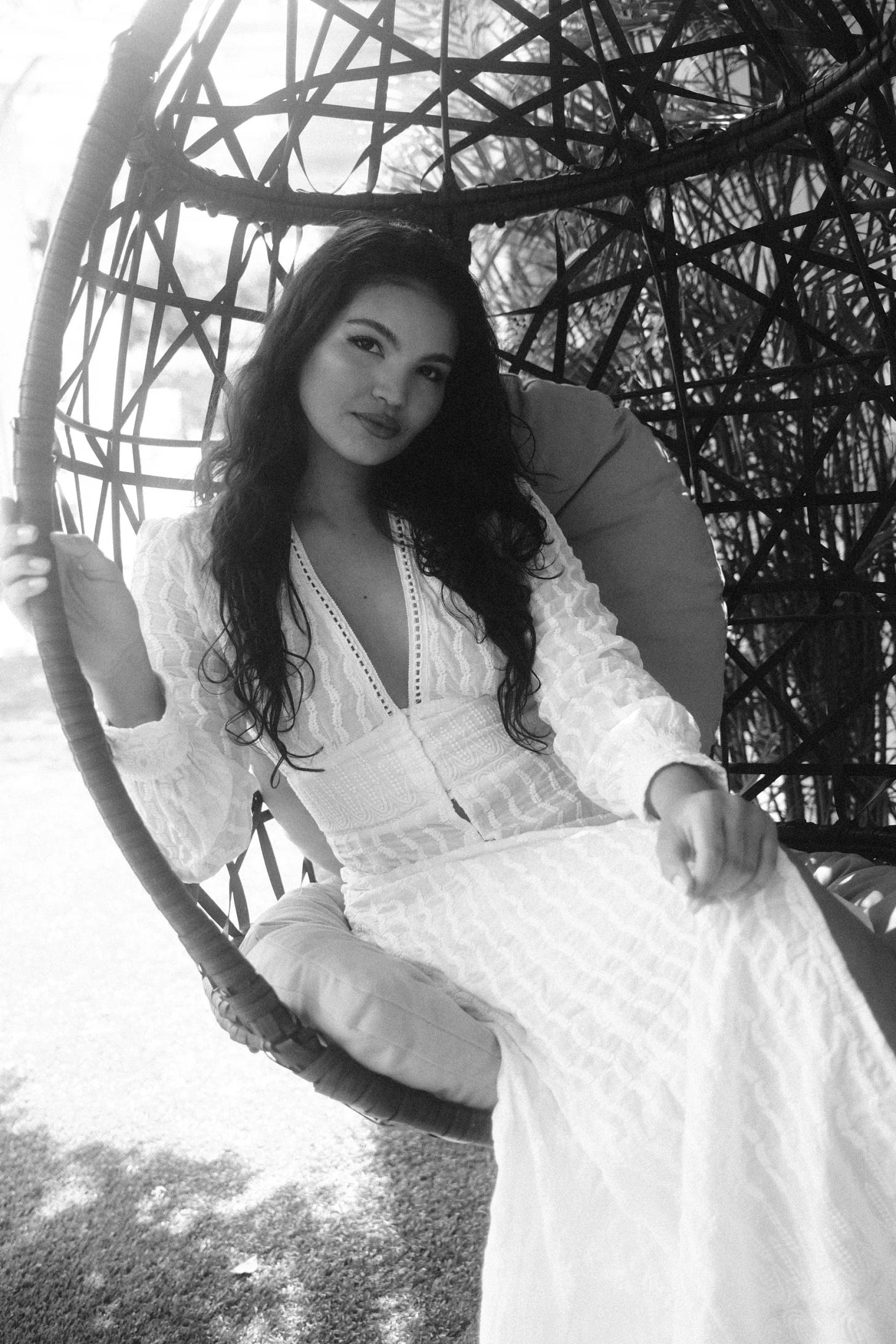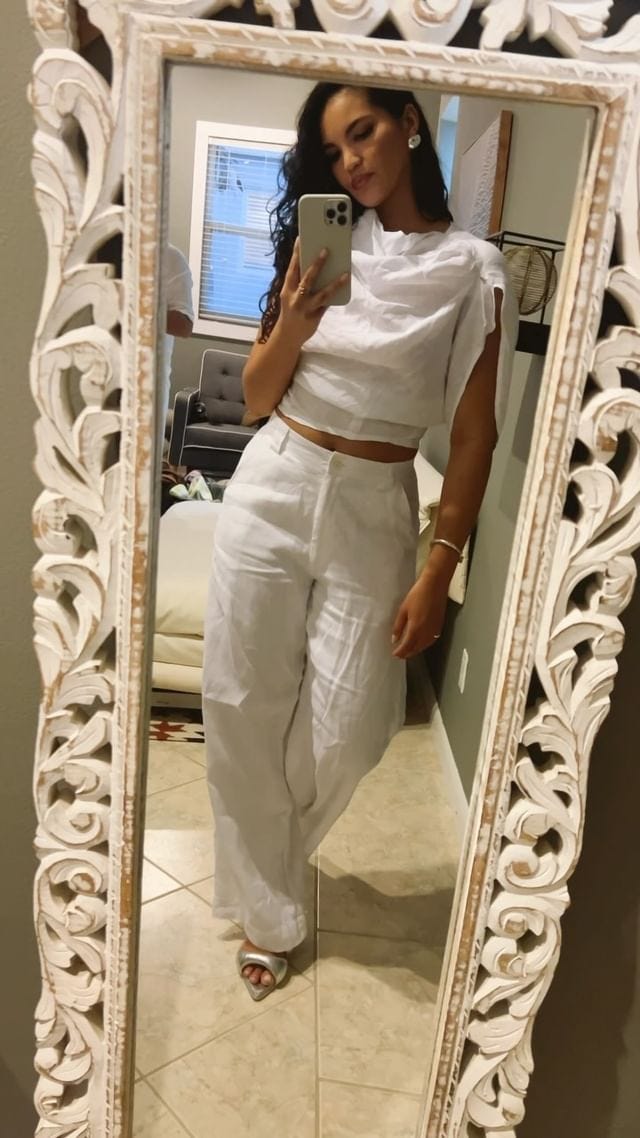Mina Robertson: “I'm immensely proud of all the parts of who I am”
The designer on what it means to be Jamaican, how her heritage influences her designs and standing on the sidelines of the party
Hi, welcome back to Mixed Messages! This week, I’m speaking to designer Mina Robertson, who is of mixed-Black, white, Chinese and Indian heritage. Founder of Jamaican fashion brand Haveli, Mina blends Jamaican creativity with traditional Indian craftsmanship, drawing on the island’s motto “out of many, one people.” With the brand now available in the UK, I couldn’t wait to sit down with Mina in London to hear about her mix and why she’s 100% Jamaican. Read her story below.
How do you define your identity?
I was born in Kingston, Jamaica. My dad is Black mixed with white, my mom is South Chinese and South Indian. They’re both Jamaican born – my grandparents are all Jamaican. My background on my dad’s side is West African. I’m mixed with Scottish as well.
It’s funny, because Haveli means home, and China and India are the homes of merchants on the Silk Road. My heritage is a story of travel. By whatever means they were brought to Jamaica and they had to start from below zero. They were pioneers. They created and contributed to the building of what we know Jamaica to be.
What’s the conversation like in Jamaica about mixed identities?
We are a predominantly Black country, even though there are a lot of mixed or multiethnic Jamaicans. Even if they are mixed, most people present as predominantly Black. I was always a minority, I stood out instantly.
Being Jamaican is an identity as well. We have mixed Jamaicans, Chinese Jamaicans, Indian Jamaicans, even white Jamaicans. We have Jamaicans from Syria, Lebanon… Jamaicans look like a map of the world. We’re all 100% Jamaican, and that’s my culture. I did feel a disconnect in high school when people tried to other me, it used to bother me. Then you grow in maturity.
I’m always careful about my wording – I’m immensely proud of all the parts of who I am, I’m not denying them. My parents made it clear who I was so that no one else could define it for me. I would never co-opt someone else’s experience. I’m also living a Black experience. My story is also Black history, Chinese and Indian history. It’s all at the same time, I'm not having one singular experience.
Your mix says a lot about the history of Jamaica.
I’m highly aware of the struggles and sacrifices it took for me to be here, what my grandfather had to do to have a voice and the level of excellence he required. On my mother’s side, they didn’t know the language when they came to this country. I’m also aware of the privileges I’m given in the world because I happen to look a certain way. I can feel like I’m tip-toeing.
In China, someone can tell you about their great, great, great, great, great, great, great ancestors. They are so tied to the land. In Ghana, the same. I cannot sway anybody in India into thinking anything else, they know who they are. There’s a lot of self-love. In our society, maybe there isn’t that depth of sense of self. Very few Jamaicans speak the language of their ancestors.
In Jamaica, we’ve created our own history by mixing and blending cultures. But there is this breaking point – I don’t know that much about where exactly my Indian, Chinese or even African family comes from. I don't know what tribe we belong to, what language we're supposed to speak.
Has your sense of self shifted over time?
2020 was an interesting time. It shifted. At high school, people would call me ‘white girl.’ But when I’d go to Ghana, they’d braid my hair and connect to the African side of me. I know I’m light-skinned, they made me feel very much at home. Then I’d come home and people would side-eye me.
I’m not trying to own this hairstyle or pretend I came up with it. This is part of my story and culture too. Maybe my hair texture doesn’t need this protective style, but I’m just as Black as I am anything else.
Most of my friends are Black. No ambiguity about it. That's how the world sees them. I don't get that.
Are there any stereotypes of mixed people in Jamaica?
There’s an assumption that if you’re light-skinned, you’re more upper class, you have more privilege. I can't speak about being mixed without speaking about that. There’s an assumption of being rich and better educated, but also stuck up.
When I was younger, I felt like I had to overcompensate and had to be so nice to everybody. It’s making people aware that we are one and the same. You grew up having soup on Saturday? Me too. We look different, but we are Jamaican.
As I’ve gotten older, I don’t try. I am who I am. Take it or leave it if you're gonna carry that assumption. There's nothing I can do about that. I used to feel like I was always ice skating and that people hated me just as I walked in. Maybe it’s still the case, but maybe I’m not for everyone. That’s fine.
How does Haveli draw in your heritages?
Growing up, we’d take clippings from magazines, go to the fabric store then the dressmaker. I started working in fashion and was being taught the history of French luxury fashion. But I didn’t see the beauty I knew represented, the beauty of my mum, aunts and the women who raised me. Going to Accra, Ghana completely changed my world. That definition of luxury being artisanal production is what I understood.
Then when I ended up going to India, I felt instantly at home. It was deeply spiritual. I met the artisans we now work with and saw the reverence they had for their craft. This was a calling, not just a job. This was their community, their home. I was reminded that fashion is agriculture, sociology, storytelling and history.
You see it in food as well, all the references are there at once. You can identify them, but at the same time it’s its own entity. It’s referential and collaborative, all at once. That’s something I wanted to do with the collection, explore how you can identify with the Indian, Chinese and Jamaican elements simultaneously.
What’s the best thing about being mixed for you?
I feel confident. Because I don’t belong anywhere, I belong everywhere. People always talk about how much representation matters – growing up, we never saw anyone who looked like me. I’m so accustomed to it, it doesn’t even register. It doesn’t dampen my ability or what my opportunities are. I feel very confident going into different spaces.
I do know that this is a little bit of me. I might not look like the general population, but Ghana’s a bit of me. India’s a bit of me. China’s a bit of me. I get stares. But at the same time, I can traverse all of these spaces.
I used to feel that I didn’t belong, that nobody loved me. There's like this feeling of being at the sidelines of the party, looking in. But then I thought, it must be because my story is its own thing. All of these parts of the world had to come together to make me, and I have to tell that story in my own way.
Can you sum up your mixed experience in one word?
Mine. It’s mine. I’m mixed on steroids. People think I'm from all over and I can float in this ambiguous space. I can't speak to anyone else's triumphs or struggles, but I know mine. There are high and low points, I wouldn’t have it any other way.
Next week, I’ll be speaking to climate justice organiser and author Mikaela Loach. Subscribe to get Mixed Messages in your inbox on Monday. Shop Mixed Messages on Etsy now – the perfect Christmas present!
Enjoy Mixed Messages? Support me on Ko-Fi! Your donations, which can start from £3, help me pay for the transcription software needed to keep this newsletter weekly, as well as special treats for subscribers. I also earn a small amount of commission (at no extra cost to you) on any purchases made through my Bookshop.org and Amazon affiliate links, where you can shop books, music and more by mixed creators.
Mixed Messages is a weekly exploration of the mixed-race experience, from me, Isabella Silvers. My mom is Punjabi (by way of East Africa) and my dad is white British, but finding my place between these two cultures hasn’t always been easy. That’s why I started Mixed Messages, where each week I’ll speak to a prominent mixed voice to delve into what it really feels like to be mixed.








